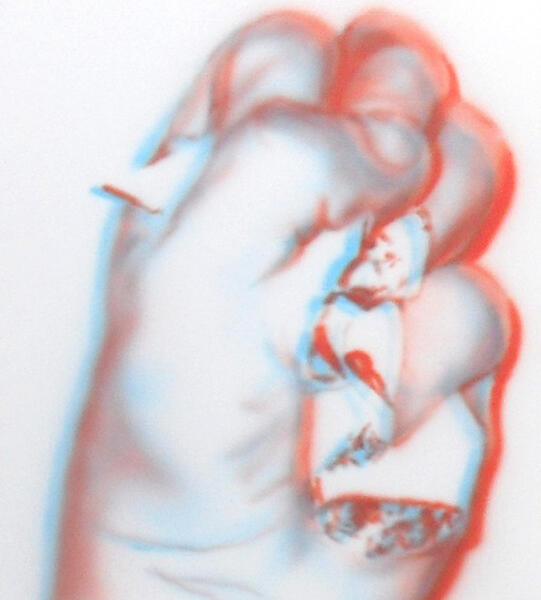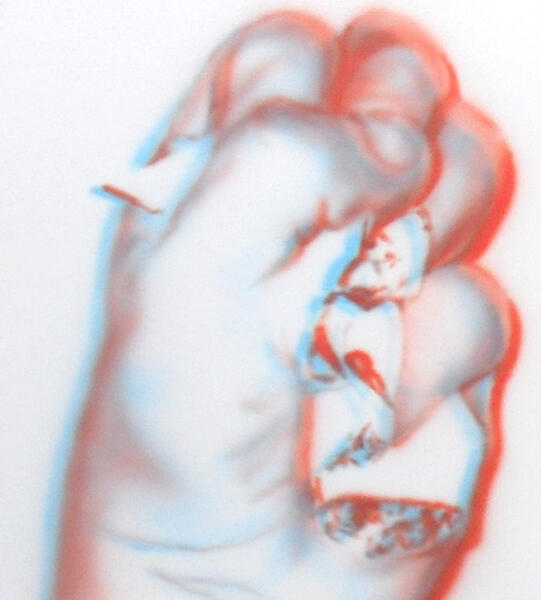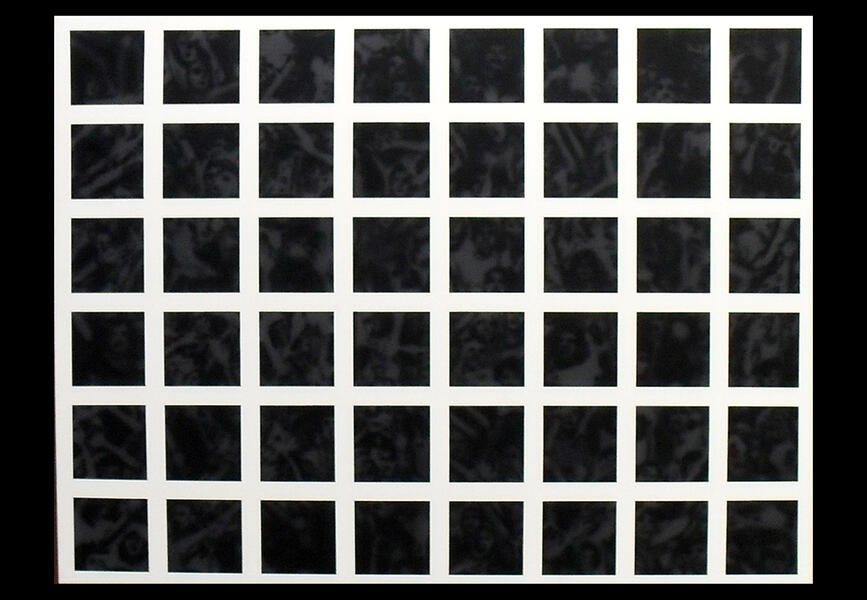Mariano Molina Brings a Dash of Intuition to Leading Bioengineering Research
The Argentinean artist Mariano Molina has exchanged his studio for the corner of an engineering lab. Instead of being surrounded by paints, canvasses and easels, Mariano Molina has found himself amidst computers and eye trackers in a University of Leicester laboratory, thanks to funding from The Leverhulme Trust.

He is spending five months working with the leading neuroscientist Rodrigo Quian Quiroga, Professor of Bioengineering at the University, whose discovery of a type of neuron in the brain which fires in an ‘abstract’ manner to different pictures of familiar persons, including celebrities like Jennifer Aniston or Halle Berry, has been internationally acclaimed.
Professor Quian Quiroga’s work has also indicated that it is possible to tell what people are seeing from their neuronal activity.
What the neuroscientist and the artist have in common is a fascination with visual perception, and effects that the artist produces intuitively the academic can explain scientifically. The experience is proving to be a revelation to both parties.
Professor Quian Quiroga admitted: “As a neuroscientist I should say that we are sometimes studying things that artists have known at least intuitively for centuries. We come up with something new, and then find artists knew about it all the time.”
Mariano Molina’s residency is also linked with a project Professor Quian Quiroga is undertaking with Dr Sandra Dudley, in the University’s School of Museum Studies, as Professor Quian Quiroga explained: “The main goal of that project is to link art and anthropology with our expertise in neuroscience and visual perception. It is related to the perception of art, and from the very beginning I thought that for a real breakthrough it would be great to have an artist on board.”
Mariano Molina has thrown himself into the spirit of the lab and has been discussing neuroscience and studying books since his arrival in Leicester. He has also worked with an eye tracker to find out how people perceive images.
He said: “It’s made a difference because I can tell that artists have this ability to realise many neuroscience concepts, but perhaps not in a scientific way. It’s mainly intuition.
“I am finding out about the way neurons represent images and I am currently looking for connections between art and visual illusions. Now that I’m starting to know the way the brain works in these areas I can try to use it in my painting. It really is affecting the way I work.”
Both Mariano Molina and Rodrigo Quian Quiroga are interested in optical illusions. “These are a big thing in neuroscience,” said Professor Quian Quiroga. “Visual illusions teach us how the brain processes information, and Mariano is fascinated by this.”
Mariano Molina added: “I had explored this before, for instance in my picture ‘Center of Gaze’. That was one of the reasons Rodrigo was interested in my work. At the time I didn’t think about the neuroscience, I wanted to force the gaze of people to see in a particular way.”
Professor Quian Quiroga paid tribute to Mariano Molina’s commitment to the residency: “Five months is a lot of time for him to commit to coming here. I think not everyone would be so open-minded as to come; it’s quite a big jump for him to be here in the lab discussing science and art with us.
“When we are designing a Neuroscience project Mariano will come up with something different which is highly valuable. We sometimes don’t have that insight because we’re not artists. It’s very good to have him here, because it’s like a partner from the other side.”
Mariano Molina replied: “It’s very exciting and has been worth it from the first moment. I’m lucky to be here.”
One thing they have been exploring together is the different ways people process high frequencies in art (detail you see close up) and low frequencies (the overall effect you see when you stand back from a picture).
Take Leonardo’s ‘Mona Lisa’ which has perplexed people for centuries. Is she smiling or not? In collaboration with Luis Martinez and Diego Alonso, from the University of Alicante, they have been using the eye tracker to research this point.
So, have they reached any conclusions? Their smiles are as elusive as the Mona Lisa’s. It may all be a question, apparently, of whether you are perceiving the low or the high frequencies, or the exact point in the painting you are gazing at.
An exhibition of workproduced by Mariano Molina during his residency at Leicester is planned.









